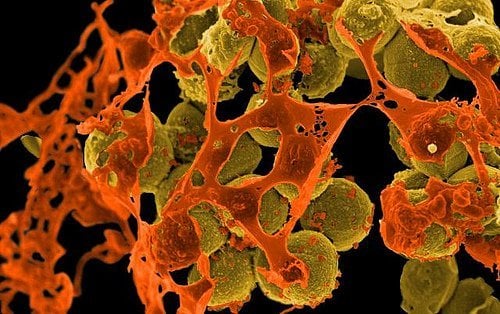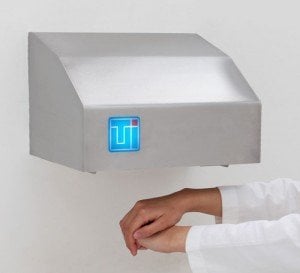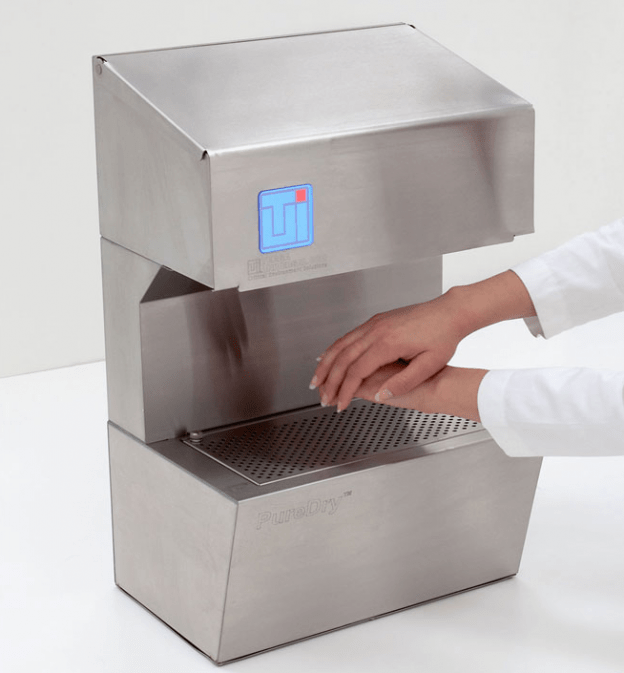Electronic hand dryers are all the hype when it comes to hand-drying cleanliness. Did you know, though, that they’ve been proven to be less efficient and hygienic than paper towels, according to a 2012 Mayo Clinic study? Then, why would anyone willingly choose to use them? It’s true certain hand dryers can leave your skin dirtier than before you began; however, the researchers only examined commonly sold models of hand dryers. ULPA-filtered (Ultra-Low Penetration Air) hand dryers, such as Terra Universal’s PureDry Cleanroom Hand and Glove Dryers, would drastically change the outcome of the evaluation.
So what should you look for in a hand dryer?
Most models of hand dryers found in public restrooms, even cleanroom gowning rooms , do not contain any sort of air filter. Why does a filter matter? Bacteria-ridden air is pulled into the standard unit and blown directly onto your wet skin, depositing harmful micro-organisms that dry on your hands. Anything in the immediate vicinity is also defiled by the tumultuous airstream. With the PureDry, micro-filtered air is recirculated through the dryer, not only eliminating contamination to the surrounding modular clean room or laboratory by reducing turbulence, but also efficiently removing 99.999% of particles as small as 0.12 microns in diameter.
, do not contain any sort of air filter. Why does a filter matter? Bacteria-ridden air is pulled into the standard unit and blown directly onto your wet skin, depositing harmful micro-organisms that dry on your hands. Anything in the immediate vicinity is also defiled by the tumultuous airstream. With the PureDry, micro-filtered air is recirculated through the dryer, not only eliminating contamination to the surrounding modular clean room or laboratory by reducing turbulence, but also efficiently removing 99.999% of particles as small as 0.12 microns in diameter.
Contact-free drying is another crucial factor to acknowledge in your hand dryer selection. PureDry utilizes a photo-electric cell to detect when objects are within the drying compartment. While most standard hand dryers are beginning to offer a hands-free option, this is trivial if you’re using a non-filtered dryer.
Do standard hand dryers remove pathogens?
It isn’t likely, based on the evidence. ULPA filters capture nearly all bacteria, mold spores, and even some viruses. PureDry’s glow-coil heater warms the upstream air prior to reaching the ULPA filter. Clean air immediately reaches your hands before it is recirculated through the collection area at the bottom of the drying unit. What is the benefit to recycling air? Outside air, which has been proven to be a source of contamination, is not drawn into the filtered airstream. An even flow of heated and filtered air is continually pulled through the component, providing an uncompromised drying process.
All right, what are my options?
There are a few options that need consideration. Of the two PureDry designs offered, the Germ-Free Recirculating Model has almost no negative impact on cleanliness, airflow of the surrounding area, or moisture levels. The recirculated air ensures the filtration system will last the lifetime of the dryer, as formerly filtered cyclical air inflicts a minimal particle load on the filter, extending its practical service life and reliability.
load on the filter, extending its practical service life and reliability.
The Single-Pass, wall-mount model contains an identical ULPA filter and clean motor technology at a reduced cost. Its layout minimizes the risk of spoiling the filter, as the construction eliminates the chance of water droplets being drawn into the air flow. However, the suggested filter replacement is every six months to maintain cleanliness since this design does not recycle air, imposing a higher particle count on the filter.
Regardless of the model, both cleanroom hand dryers offer space-efficient designs and provide clean, eco-friendly, and cost-effective methods for drying your hands, gloves or small parts.
Click here for more information about PureDry Hand and Glove Cleaners.



